Discover the magic of Turkish coffee! A thick, strong, and flavorful coffee that’s a symbol of hospitality and tradition in Turkey and the Middle East. Learn how to make Turkish coffee at home with my easy step-by-step guide.

If you’ve never experienced Turkish coffee before, you’re in for a wonderful treat! This is not just any coffee, it is a symbol of hospitality, friendship, and tradition. And sometimes, you can even be lucky enough to get your fortune read!
What is Turkish Coffee?
Turkish coffee (قهوة تركي in Arabic) is a thick, strong, and flavorful coffee that’s served in espresso-sized cups.
In Levantine countries, including Greece and Cyprus, it is often referred to as “Arabic coffee”, and is usually ordered “plain” which means no sugar, or “sweet” or “medium” sweetness.
It’s an everyday drink and the official coffee in the region, so when someone says, “Do you want coffee?”, they’re referring to Turkish coffee.
When I was a child and we’d visit our dear old neighbor, she would always serve my mom a cup and then read our fortunes from the dregs left in the bottom of the cup. She’d place the cup upside down on a saucer and then ‘read’ what she saw. Usually, it was something like “You’ll get a phone call with good news”, “You’ll have a friend visit you”, or “You’ll unexpectedly get money”. This was always a lot of fun!
It is most often enjoyed in the morning or after a meal and it is customary to serve it with a glass of water so people can cleanse their palates before sipping the coffee. I also like to serve it with something sweet like chocolate, Turkish delights, or baklava.
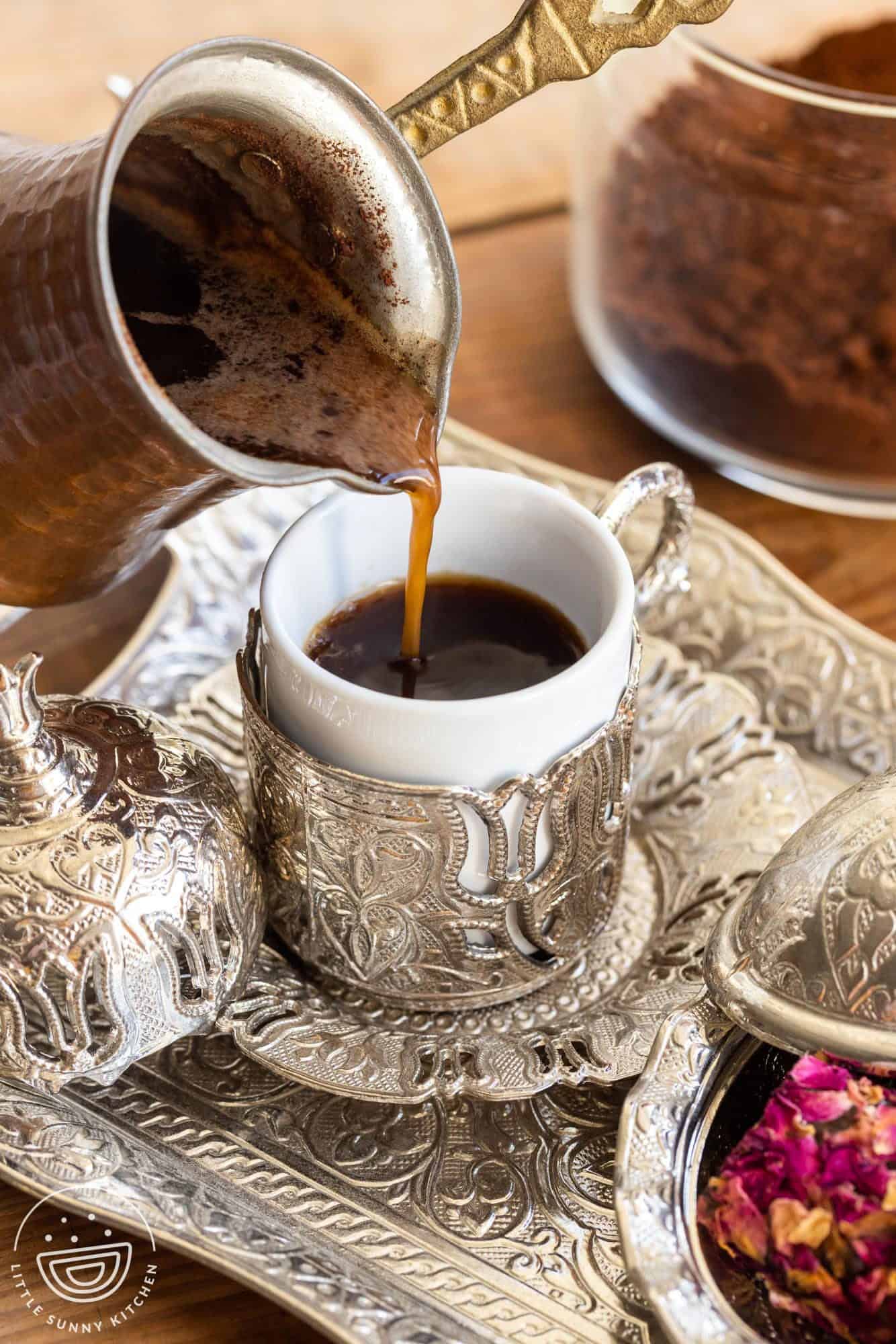
How does it compare to other coffee?
With so many great ways to make coffee at home, it can be overwhelming to choose which method you should go with. They all have their unique ways and flavors and Turkish coffee is definitely distinct in its preparation and texture!
Where Turkish coffee has a complex flavor and a thick, gritty texture, espresso has a bolder straightforward coffee taste. Moka pot coffee is also strong and similar tasting to espresso and French press coffee and Aeropress coffee have more pronounced tastes and cleaner textures than you’ll find with Turkish coffee.
Probably the most unique part about Turkish coffee is that the grounds are mixed directly with the water, which is why it’s so important for them to be ground very finely.
Differences Between Turkish, Arabic, and Greek Coffee
Turkish, Arabic, and Greek coffee share similar roots but have distinct flavors and preparation methods.
- Turkish Coffee: Known for its thick texture and very fine grind (like a powder), Turkish coffee is traditionally brewed in a small pot called a cezve. It’s lightly sweetened with sugar and unspiced, letting the natural coffee flavor shine. It’s enjoyed with a small layer of foam on top.
- Arabic or Levantine (Turkish) Coffee: Arabic coffee, which is popular in Jordan, Palestine, Syria, and Lebanon, is typically made with medium-roasted beans (often a third dark roast mixed with two-thirds light roast) that is finely ground (a bit coarser than Turkish grind), and brewed in a pot similar to a cezve called an ibrik. The main distinction is the addition of ground cardamom, which creates a warm, fragrant flavor.
- Greek Coffee: Greek coffee is very similar to Turkish coffee in preparation, also brewed in a small pot called a briki and served with a thick foam on top. However, the roast used is often darker, resulting in a slightly bolder, more robust flavor. The grind is usually finer than that of Arabic coffee but slightly coarser than Turkish coffee.
Now, let’s take a look at how you can make your own perfect cup of traditional Turkish coffee at home!
What You’ll Need
This is what you’ll need to make 2 espresso-sized cups of coffee.

- Turkish coffee pot (cezve/briki/ibrik): This is a small copper or brass pot with a long handle. I recommend a 2-3 espresso cup size cezve for making it home. If you don’t have a pot, you can use a small saucepan. For convenience, you can use an electric Turkish coffee maker, that will do the whole process for you.
- Long-handled spoon: Makes it easy to reach into the coffee pot (cezve) without getting too close to the heat, especially since the pot is usually narrow and deep. It also lets you stir the coffee thoroughly as it heats, ensuring that the fine grounds mix well with the water and sugar, if you’re adding any.
- 2 Turkish coffee cups – espresso/demitasse cups: Demitasse cups hold 2 to 3 fluid ounces (60 to 90 milliliters). You can find them in Middle Eastern stores or online. They are also known as Finjan.
- Cold water: Filtered water will give you the best flavor. When people make it, they usually measure how much water they need with an espresso cup they’ll be serving the coffee in to know how many “cups” of water to add. That’s usually around 3 oz of water per cup.
- Ground coffee (finely ground): Turkish coffee is more finely ground than regular java. It almost looks like powder. You can find it in most Middle Eastern or Mediterranean supermarkets or purchase it online.
- Granulated sugar: This is optional, depending on how sweet you like yours.
Which Coffee Should You Use?
As with all coffee, you’ll get the best flavor when you use ground coffee made from good quality fresh beans. Medium or dark roast beans work best for this type.
The coffee needs to be ground very fine – almost to a powder consistency. If you’re not grinding your own beans, look for pre-ground that is specifically meant for Turkish coffee.
Complete list of ingredients and amounts can be found in the recipe card below.
How Do You Make Turkish Coffee
It only takes 5 – 7 minutes to make a delicious cup of this aromatic coffee which means you can make it any time of the day without too much effort!
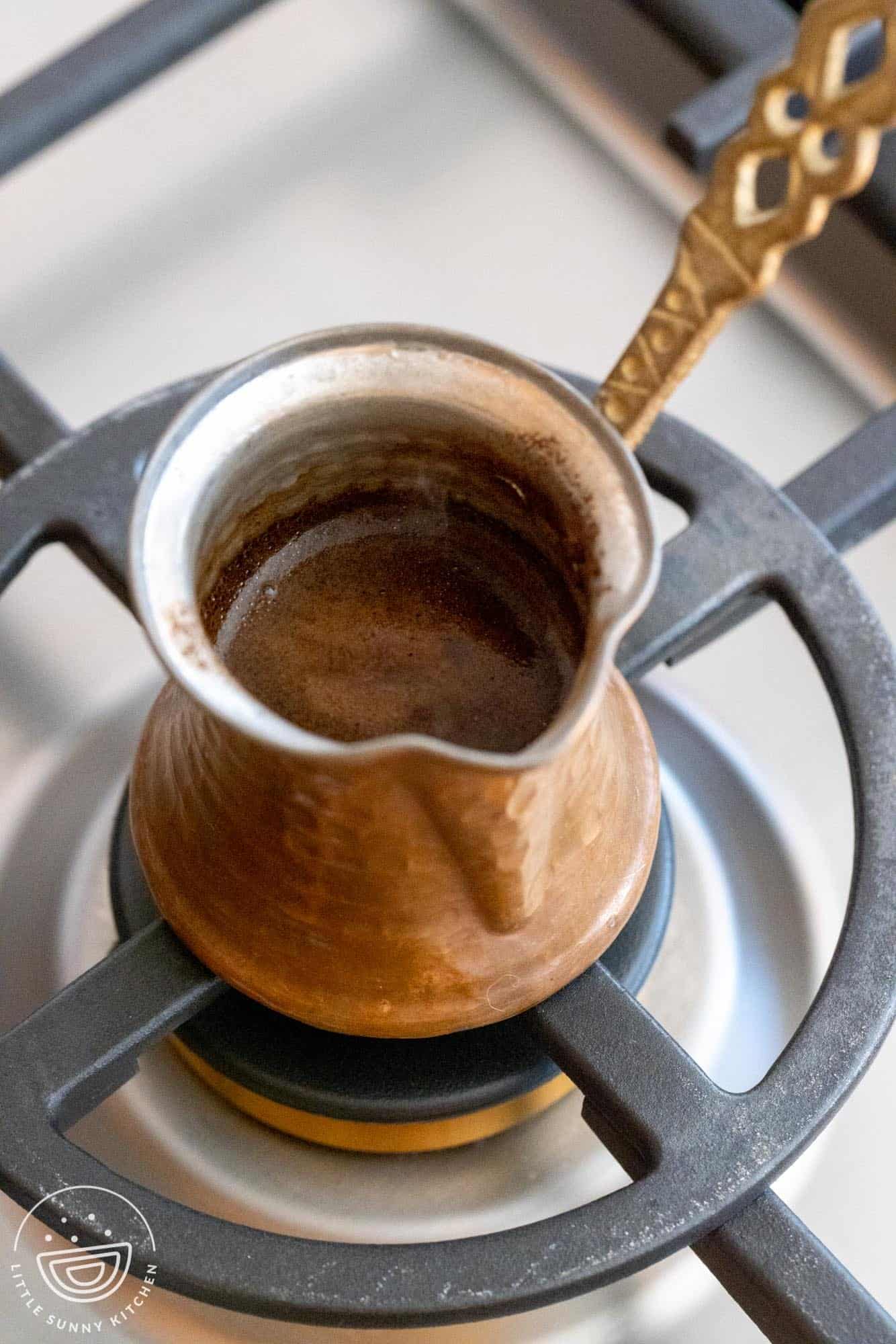

- Fill cezve. Add the coffee and sugar (if using) to the cezve and mix it, then add the water.
- Brew coffee. Place the pot over medium-high heat. Stir occasionally until the top begins to foam up. Turn the heat down or remove it from the burner and stir, then place the pot back on low heat and let it foam once more.
- Pour and serve. Take the pot off the heat before it reaches a full boil, and pour the coffee into your cups, letting the grounds sink to the bottom. Serve immediately.
Tip!
Just a quick note about the crema (foam) on top. If you want the foam, only allow it to foam once, and then remove the cezve from the heat and pour it into your cups.
If you don’t wish to keep the crema, let it foam again up to 3 times. This will also intensify the flavor.
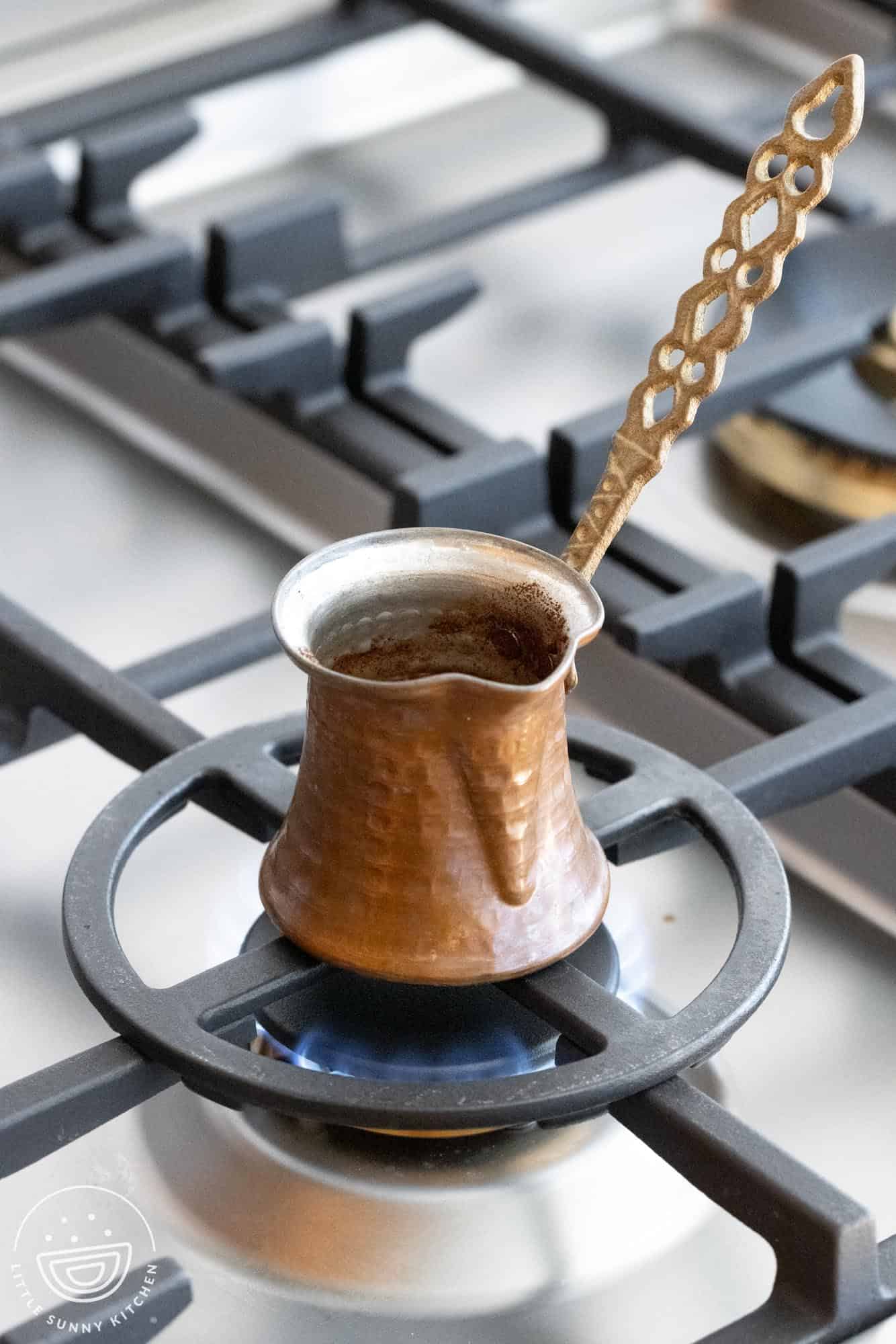
Recipe Tips
- In the Middle East, ground cardamom is almost always added to the coffee mix. For a spiced version, add 1/8 teaspoon of ground cardamom to brew along with it.
- Let the grinds settle for a few seconds before pouring so they aren’t floating in your cup.
- Pour a small amount into each cup at first, going back and forth between them. This technique helps distribute the foam evenly and prevents all the coffee grounds from settling in one cup, ensuring each cup has the same rich, smooth texture.
- You’re not meant to drink the grounds. Carefully take your last sip and let the grounds remain on the bottom.

How to clean your pot
Turkish coffee pots are very easy to clean. Regularly wash it with mild soap and warm water and then rinse and let it air dry or dry it off with a cloth. Now it’s ready to use for the next time!
Recipe FAQs
The grind has to be extra fine like powder. A Turkish coffee grinder will help with you that. If you can’t get a fine enough grind at home, you can buy it pre-ground in Middle Eastern grocery stores or online.
Make sure you use the freshest grounds you can find and be careful not to bring it to a full boil which can cause the foam to evaporate.
While it’s not customary to add milk, you can add it if you want to! I would suggest warming the milk, so it doesn’t cool your drink down too much.
I love sharing recipes from all over the world and I can’t wait for you to continue to pass it on. Save this one for the next time you want another cup. Pin it for more people to enjoy too!
Did you make this? Be sure to leave a review below and tag me on Facebook, Instagram, or Pinterest!

Turkish Coffee Recipe
Recipe Video
Equipment
- Cezve or Ibrik, or a small saucepan
- Long-handled spoon
- 2 espresso/demitasse cups
Ingredients
- 6 ounces filtered water
- 2 heaping teaspoons fine ground coffee
- granulated sugar optional
Instructions
- Add the coffee and sugar (if using) to the cezve and mix it, then add the water.
- Place the pot over medium-high heat. Stir occasionally until the top begins to foam up. Turn the heat down or remove it from the burner and stir then place the pot back on low heat and let it foam once more.
- Take the pot off the heat before it reaches a full boil and pour the coffee into your cups, letting the grounds sink to the bottom. Serve immediately.
Notes:
- Cardamom: In the Middle East/Arab countries, cardamom is traditionally added to Turkish coffee. Use 1/8 teaspoon for authentic flavor.
- Pouring: Pour a little coffee into each cup first, alternating to ensure even foam and grounds.
- Foam: For a foamy top, let it foam once, then remove from heat and pour. For a stronger flavor without foam, allow it to foam up to three times before serving.
Nutrition Information
This website provides approximate nutrition information for convenience and as a courtesy only. Nutrition data is gathered primarily from the USDA Food Composition Database, whenever available, or otherwise other online calculators.
© Little Sunny Kitchen

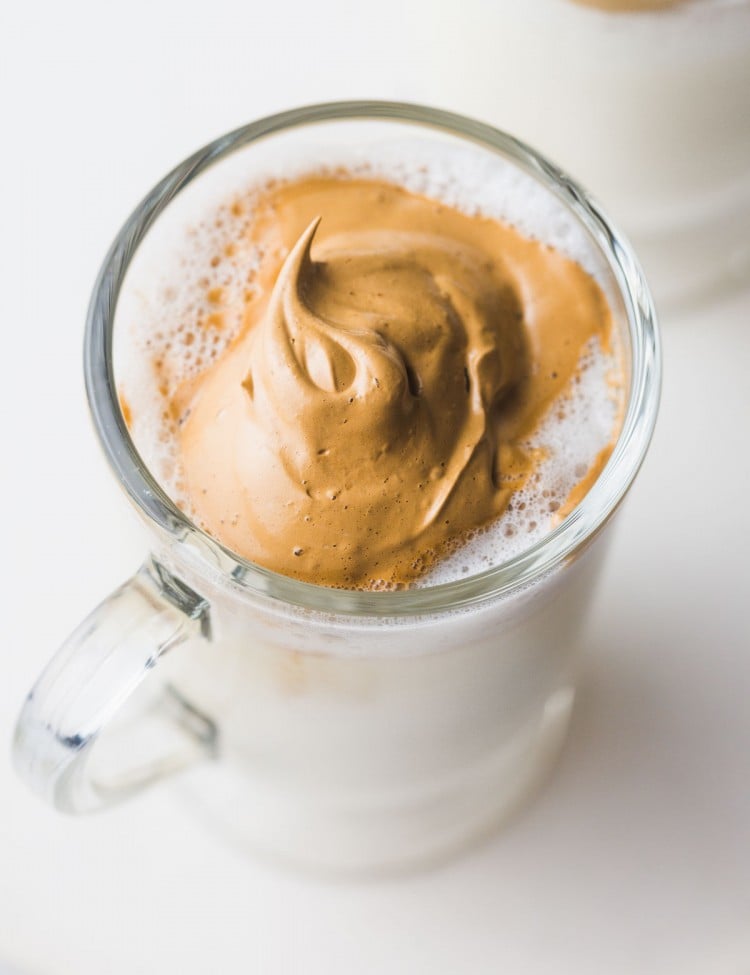
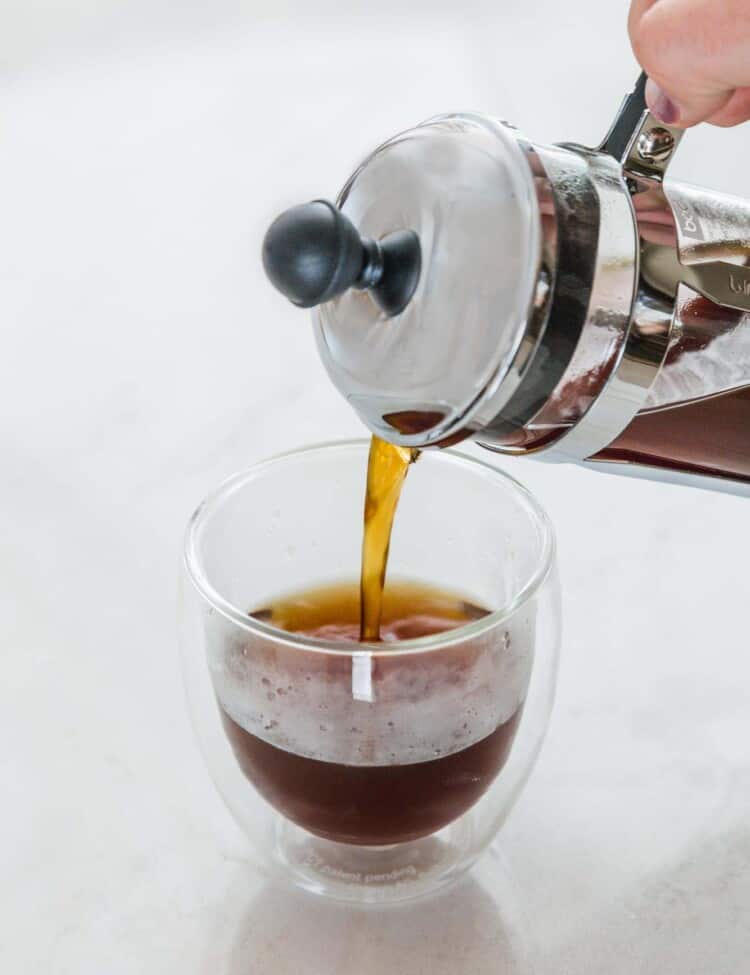

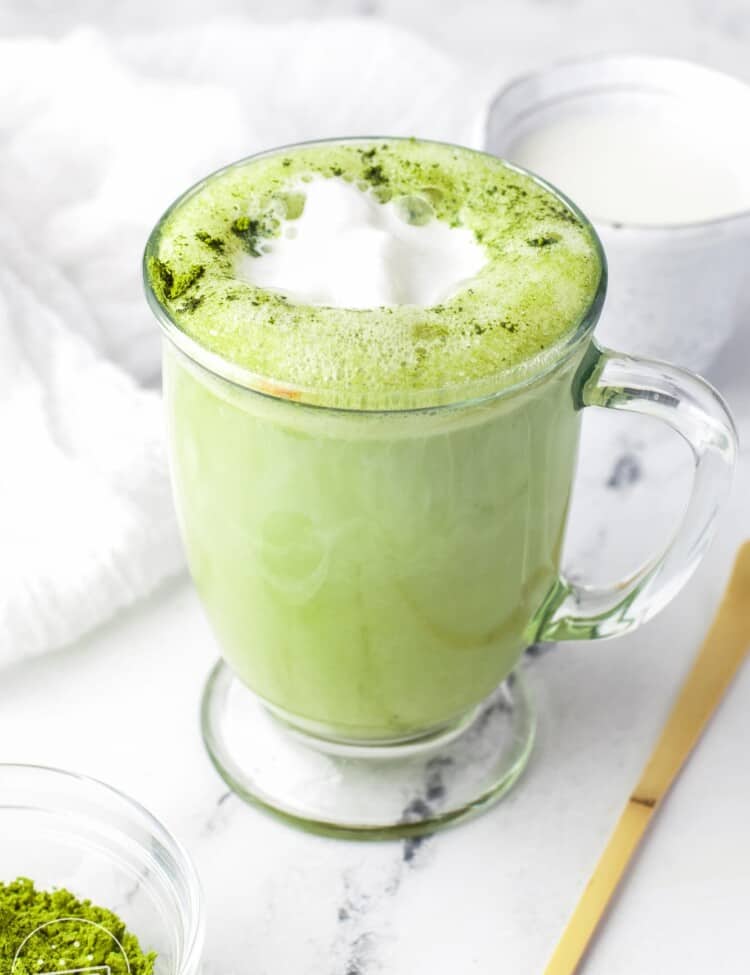

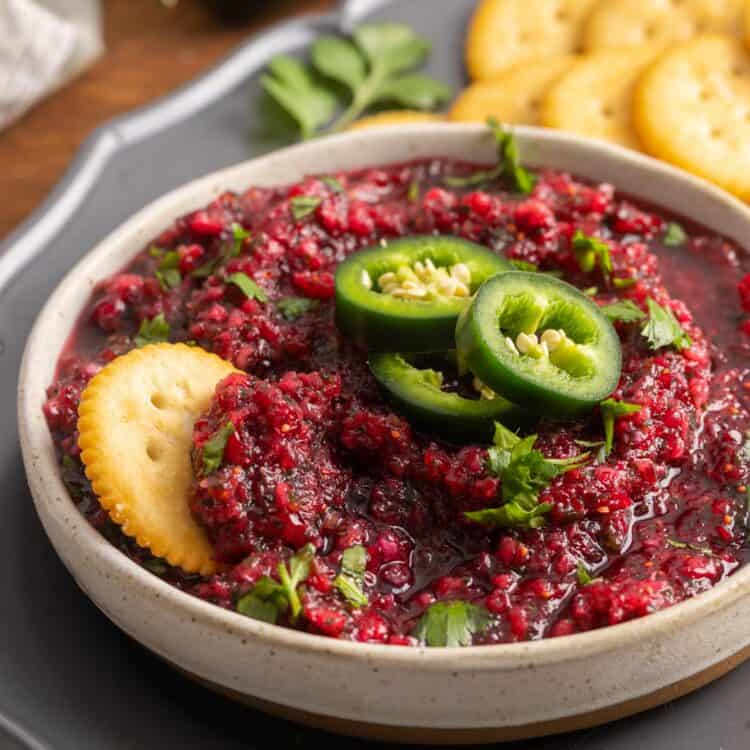
Nawal says
I love Turkish coffee but the way you describe it it’s amazing I’m going to make it your way 👍🙏
Diana says
Thank you, Nawal! I hope you enjoy making it this way, it really brings out the best flavor in the coffee!